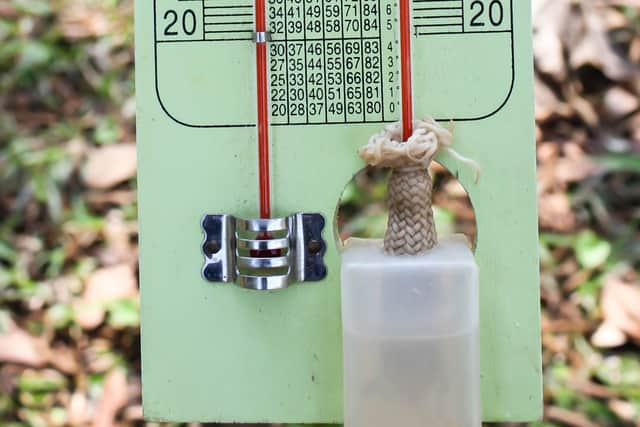What is wet bulb temperature and why it is an important alternative way to measure heat?
How often have you heard somebody saying that they had experienced temperatures of 40C on holiday and can’t understand why it’s such a problem for the UK?
The answer is that not all high temperatures are created equal – with the amount of humidity in the air making heat feel more problematic for humans and having a bigger impact on health.
Advertisement
Hide AdAdvertisement
Hide AdThe way this is measured is called wet bulb temperature and, while it’s not a particularly well known outwith the scientific community at the moment, that could change as global warming continues to wreck havoc on the world’s climate.
Here’s everything you need to know.
What is wet bulb temperature?
Wet-bulb temperature is the temperature read by a thermometer covered in a cloth soaked in air-temperature water, which has air passed over it.
The drier and less humid the air is, the faster the water will evaporate. The faster water evaporates, the lower the thermometer's temperature will be relative to air temperature.


This mimics human skin when it sweats in a bid to reduce body temperature – hence the wet-bulb temperature is the lowest temperature that can be reached by the evaporation of water only.
In 100 per cent humidity the air temperature and the wet bulb temperature will be the same, otherwise the wet bulb temperature will be lower.
Why is it useful?
The wet bulb temperature is an accurate way to tell whether humans can cope with particular weather conditions – more so than a simple temperature reading
As long as the wet bulb temperature is well below your skin temperature your body will be able to cool itself through sweating.
As the wet-bulb temperature approaches a the body’s core temperature, you lose the ability to cool down and this can lead to dehydration which can be fatal.
What is a dangerous wet bulb temperature?
Advertisement
Hide AdAdvertisement
Hide AdOnce the wet-bulb temperature exceeds 35C no amount of sweating or other natural colling mechanism is enough to lower the body to a safe temperature.
What are the highest wet bulb temperatures ever recorded?
The top ten highest wet bulb temperatures ever recorded are as follows:
36.3C: Ras Al Khaimah City (UAE)
36.2C: Jacobabad (Pakistan)
36: Mecca (Saudi Arabia)
35.8: Hisar (India)
35.6: Yannarie (Australia)
35.4: Villahermosa (Mexico)
35.1: Khyber Pakhtunkhwa (Pakistan)
35: Maracaibo (Venezuela)
35: Matlapa (Mexico)
35: Choix (Mexico)
How high is the wet bulb temperature in the current UK heatwave?
At 2pm onTuesday, July 19, the wet bulb temperature was reaching up to 24C on England’s south coast.
In Scotland it reached around 20C in the Borders.
Read more:
Comments
Want to join the conversation? Please or to comment on this article.